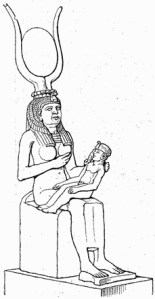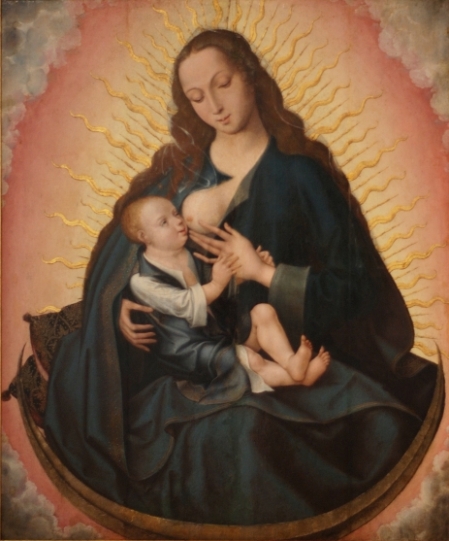All the illustrations here are listed as Public Domain except perhaps the last one.
In my recent studies I came across a comment that the Madonna and Child Christian icon was lifted from the earlier Egyptian icon of Isis and Horus.
The observation seemed pertinent, as the “other Isis” has been getting a lot of attention recently.
Indeed, in ancient times Egypt and Rome became closely linked, and so a cultural exchange took place between Africa and Europe which lives on in disguised forms to this day.
According to Egyptologists, Isis was a wife of Osiris, who resurrected him after he was killed by a rival in order to have sex with him which produced the baby Horus.
All these personages were quite well-known in their contemporary cultures.
The Africa-Persia-India-Europe connection deserves more attention (by someone anyway), but this little post is only to note its existence.
Most ancient traditions involve a “pantheon” of “gods.” It is not clear that the original tellers of these stories considered all these personalities gods the way we think of them today. But certainly this collection of personalities served as the basis for numerous stories in which the tellers and the listeners could see aspects of themselves.
And so the Yoruba of Nigeria (so many of them taken as slaves to the Americas) had their own group of personalities of which stories were told. And many students of “comparative religion” have noted similarities among these pantheons, both in terms of names and relationships, and in terms of their stories.
As Osiris was a major personality in Egyptian stories, so Oshun was a major figure in Yoruba stories, except Oshun was a woman.
The Yoruba beliefs, practices and stories came to Brazil, where they merged with those of other African cultures, as well as Catholic Christianity, to produce what most now call Candomblé, a Brazilian mixture of religious and spiritual traditions.
In this last illustration, a little girl gets the great honor of playing Oshun in a ceremony, wearing the traditional yellow dress, and holding a fan or mirror. The beads over her face are probably there to emphasize that she is playing a part in a story about someone else.
Tags: Isis, spiritual traditions





Leave a comment